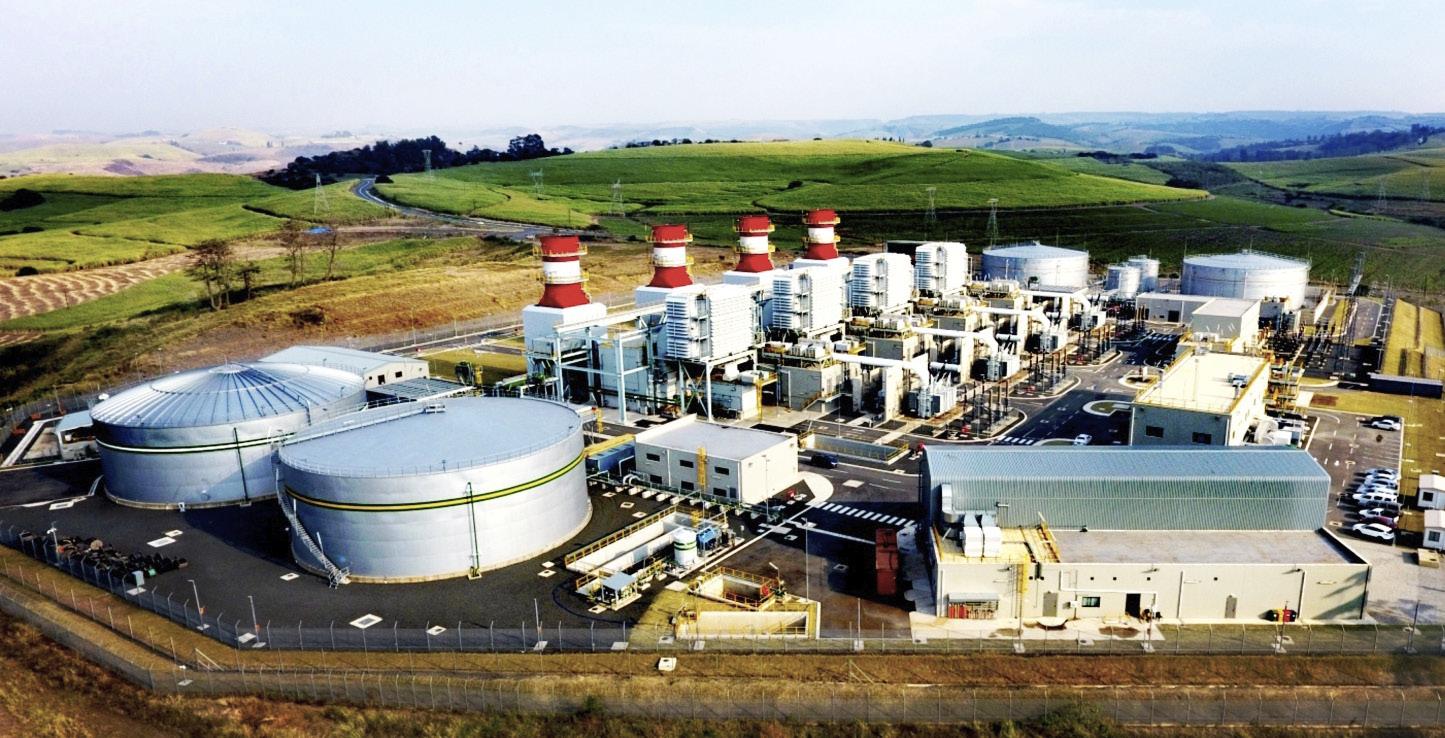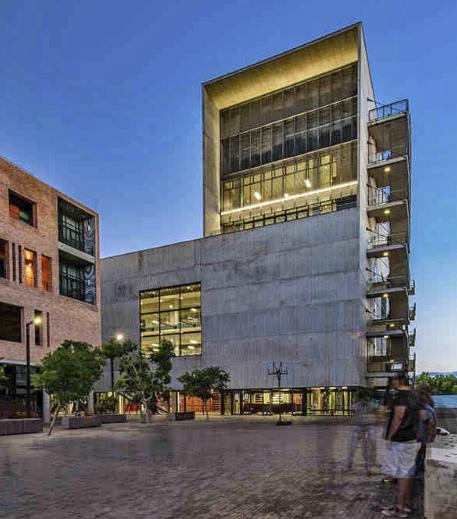
4 minute read
Water
Cape Town has learned big lessons from a harsh drought.
Pipes before installation in the Western Aqueduct project, the massive scheme to bring water to Durban from the Midmar and Spring Grove dams in KwaZulu-Natal. Image: Knight Piésold.
Advertisement
In 2030 South African demand for water will be 17% greater than supply. That is the verdict of the 2030 Water Resources Group. The Water Resources Group, an international consortium of private companies, agencies and development banks has established a South African chapter, the Strategic Water Partners Network.
The Western Cape, which bore the brunt of a fierce drought for several years, in fact fares well in terms of providing water infrastructure and maintaining its wastewater treatments plants. The Western Cape Department of Agriculture has launched a climate action plan called Smart Agri which includes doing studies on conservation agriculture.
When the long-term drought was at its worst, tourists to Cape Town were encouraged to “Save like a Local”. Together with a range of technical and legislative measures, the campaign to use less water worked remarkably well. Where residents and businesses were using 1.2-billion litres per day in 2015, by the middle of 2018 the figure was 516-million litres. While the taps were not literally turned off (the dreaded “Day Zero” was averted), pressure in the pipes was reduced. The International Water Association’s Water Loss Conference in Cape Town reported that two of the world’s largest advanced pressure control systems are operating in Cape Town.
The drought also led to creative thinking by corporate South Africa. Old Mutual’s large Pinelands campus (accommodating approximately 9 000 staff members) is producing its own water by purifying wastewater. The City of Cape Town is thus relieved of the need to supply 15 000kl of water every month as a result of the plant.
SECTOR INSIGHT
An inventor is using macadamia nut shells to filter water.
Technology and innovation
Although Cape Town had an urgent need for desalination plants when drought came to the region, the province of KwaZulu-Natal is taking a lead in this technology.
Richards Bay has installed a 10-container desalination plant next to the municipal water treatment plant at Alkanstrand. The first mobile sea water purification unit in South Africa, it comprises 10 containers and is located adjacent to the water treatment plant at Alkantstrand. It can deliver
10 megalitres of drinking water. In 2018 JG Afrika and technology partner NuWater delivered a R72-million desalination plant to South32’s Hillside aluminium smelter in the same town.
A new kind of water filtration was reported in Engineering News in 2019, a system which puts macadamia nut shells to use. The brainchild of Murendeni Mafumo, the idea was first put into action in 2018 and has been used in schools and rural communities by Kusini Water. Powered by solar power, the purification system uses a carbon filter that is made from macadamia nut shells.
In an attempt to reduce the amount of water sucked up by alien plants, Coca-Cola aims to recover nearly 3-billion litres of water through the removal of invasive plants. The Coca-Cola Foundation is investing R18-million the Replenish Africa Initiative (RAIN) through catchment restoration, invasive plant removal, wetland rehabilitation and conservation in four provinces.
The introduction by the National Department of Water and Sanitation and the Water Institute of South Africa (WISA) of the Blue and Green Drop Awards has been successful. The nation’s municipalities receive scores reflecting how well they are doing in terms of providing clean water.
In order to win a Drop Award (Blue for water quality, Green for waste treatment), water systems have to score 95% or higher. The DWS has allocated R4.3-billion to helping municipalities deliver water. The Interim Water Supply Programme concentrates on 23 district municipalities.
Two water companies have recently been sold to local black business leaders. Aveng Water was bought by a group of investors that included E-Squared Investments and Suzie Nkambule, who was the MD of Aveng Water at the time of the sale.
Sebata Group Holdings sold a majority shareholding in USC Metering and Amanzni Meters, two of its subsidiaries, to Inzalo Capital Holdings in August 2019. The transaction means that the two companies qualify as “Black Industrialist” businesses in terms of the Department of Trade, Industry and Competition’s Black Industrialist Policy (BIP).
Supplying water to households and businesses has often been a task beyond the capabilities of some of South Africa’s municipalities.
The newly-formed Municipal Infrastructure Support Agency (MISA) falls under the National Department for Cooperative Governance and Traditional Affairs and will assist municipalities to plan for, provide and maintain infrastructure. The first action of MISA was to commission 81 engineers and town planners to get to work in areas that need the most help.
Another response to the municipal problem is a new national strategy which gives a bigger role to well-resourced water boards such as Umgeni Water and Sedibeng Water.
In terms of the National Water Resource Strategy, catchment area management agencies have been established to oversee water resource management on a regional basis. The Imkomati-Usuthu Catchment Management Agency covers Mpumalanga, parts of Limpopo and part of the Kingdom of eSwatini. Another example of a CMA is the Breede-Gouritz Catchment Management Agency in the Western Cape.
The National Water Resource Strategy considers groundwater to a far greater degree than previous plans. Extracting groundwater takes skill and money, but with droughts becoming commonplace it is likely to become a much higher priority in water planning.
ONLINE RESOURCES
National Department of Water and Sanitation: www.dwa.gov.za South African Water Research Commission: www.wrc.org.za Trans Caledon Tunnel Authority: www.tcta.co.za Umzimvubu Catchment Partnership Programme: www. umzimvubu.org Water Institute of South Africa: www.wisa.org.za










